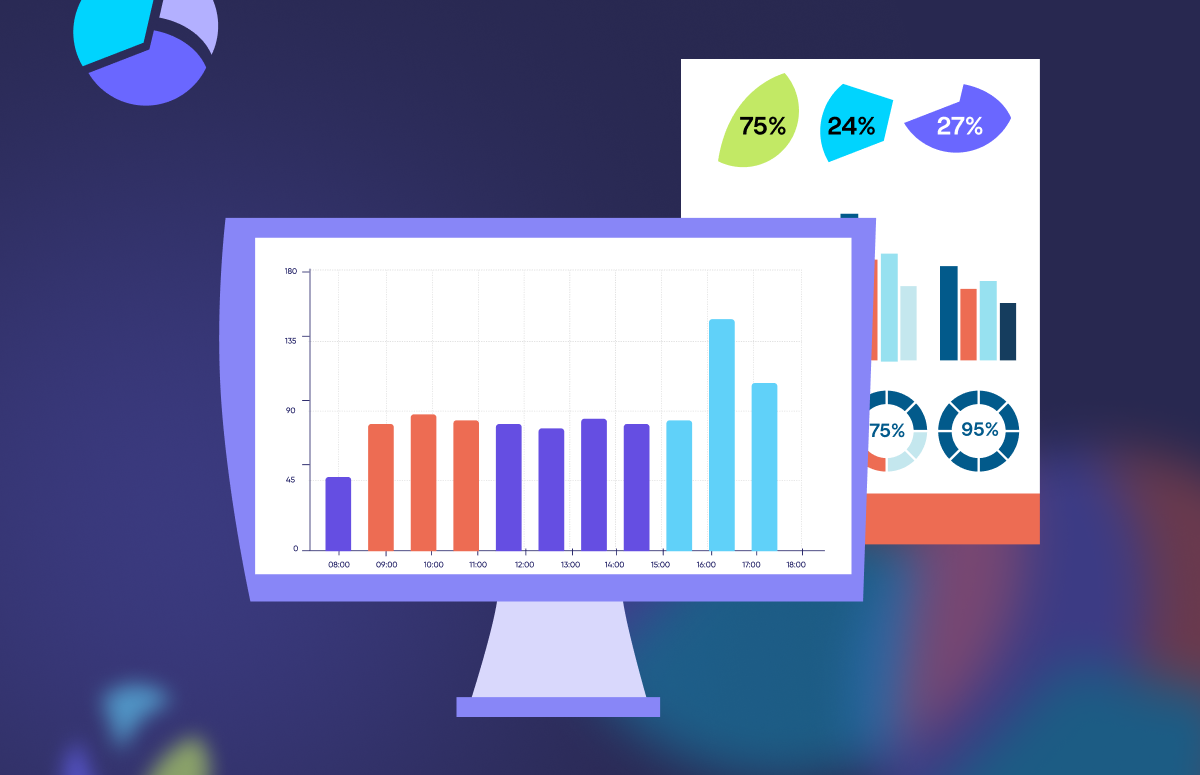7 Essential Tips for Scaling Sales - Fast
Scaling sales key takeaways:
- Targeted leads focus your resources on where they will have the most success.
- Inbound and outbound leads are different; it pays to split your sales team.
- There are real advantages to internal promotions.
- A data-driven approach will optimise team performance.
- Incentives help to motivate your sales team.
- The right tech stack eliminates friction.
- Buyer centricity boosts efficiency in the sales process.
What does scaling sales mean?
Scaling sales is the process of increasing your sales team size and implementing tools and systems to optimise performance. You can achieve significant revenue growth by boosting sales and the average revenue per customer.
With young companies, especially startups, there’s a bit of an obsession with how to scale a business.
But isn’t scaling the same as growth?
Not quite:
Growth is a steady, linear function. Revenue increases at the rate at which you add resources.
Scaling is where revenue increases at a rapid rate while gradually adding resources.
Once you’ve demonstrated growth and established processes, you can likely scale and manage your business more effectively.
When is the right time for scaling sales?
There isn’t a hard and fast rule, but it pays to look at the data.
Here are some questions to ask yourself:
- How will we achieve scaling in this particular economic climate?
- Can we afford to scale sales?
- Can we afford to pay SDRs the going market rate?
7 tips for scaling sales
Over the last two years, the Cognism sales team has almost tripled in headcount. It’s safe to say we know a thing or two about scaling a sales team.
Here’s the expert panel we spoke to:
- Jonathon Ilett, VP UK & I at Cognism.
- David Bentham, Director, Sales Development at Cognism.
- Nelson Gilliat, Founder of Marketing-Led Growth via The Buyer Centric Revenue Model Community.
1. Get your targeting right
When your business is scaling up, you have finite resources. You’ve got a specific number of salespeople who only have a certain number of hours in the week. As a result, you have to focus your resources on where they will have the most success - and that means targeted leads.
At Cognism, we created rankings for various categories of company:
- Green – those businesses most likely to benefit from our all-in-one B2B prospecting solution.
- Amber – medium-interest companies who would find some benefits from the Cognism platform but aren’t best-fit prospects.
- Red – organisations who wouldn’t benefit from what we do.
Using this system, the sales team knew exactly who to target and who to leave alone.
This process was entirely data-driven. The companies were ranked based on the following criteria:
- Renewed customers per company size.
- Renewed customers by industry.
- Total Addressable Market (TAM) size.
- Ease of acquisition.
- Annual Contract Value.
2. Split your outbound and inbound sales teams
It’s a rule of B2B lead generation that all leads are not created equal.
Leads that come to you (inbound) are more valuable than ones you prospect yourself (outbound). They’re more likely to move through your funnel and become customers. Because of this, you should treat inbound and outbound marketing leads differently.
We found that splitting up the sales team into two teams - Sales Development Representatives (SDRs) focused on outbound, and Marketing Development Representatives (MDRs) focused on inbound, made a significant difference to results.
Jonathon said:
“We really wanted to concentrate on all those leads that were coming in from marketing and how we can increase the amount that gets to the demo stage.”
This is the structure of Cognism's sales team 👇
3. Promote internally wherever possible
There is always a conflict at companies as they scale sales.
To avoid conflict as much as possible, you need to hire the right people and, ideally, hire them quickly.
The question is:
Should you promote internally or hire external SDR candidates who may have more experience?
For Cognism, the aim is always to promote from within.
But what about external candidates?
A good idea is to use them as benchmarks to assess your internal people against. Are there any missing skills or requirements you hadn’t thought about before?
Hopefully, assessing external candidates in this way will reassure you that you’re doing the right thing by promoting internally.
David explained:
“I believe you should always promote internally because it shows a clear progression path. It gives the rest of the team confidence that they can get to that level as well.”
4. Data gives you insights
Take a data-driven approach to your sales team in everything they do. Create dashboards that measure the B2B sales metrics that matter.
At Cognism, it’s not about creating a Big Brother culture or even measuring activity; we like to focus on outputs more than inputs. It’s because studying B2B data is the most effective way to identify training opportunities.
For example, you can measure the percentage of a cold call an SDR spends talking with a prospect. Ideally, you want it to be as low as possible; you want their prospect to do most of the talking.
You can work out an average percentage of time for the team. If someone’s percentage is much higher than the average, they might need some training on how to leave space for the prospect to talk.
Someone much lower than the average should be the one everyone tries to emulate.
5. Be creative with your incentives
Incentives are powerful when you scale sales. They can jump-start team motivation and promote healthy competition.
It’s always a good idea to get creative with your comp plans.
David is famous in the Cognism office for running ad hoc incentives for his sales team. This helps to keep them motivated and drives the right behaviours.
“I buy a load of scratchcards. I put them in between our SDRs. I choose an activity we need to target, like meetings booked, if we’re low. Then I say, whoever makes the most calls today will get a scratchcard. It’s how you sell it; I say if you make enough calls today, you might make a million pounds!”
Think outside the box when it comes to motivating your salespeople. That’ll help you to scale sales as we did.
6. Buy the right tech
Routine tasks eat away at reps' time - it's a common problem. But with the right tech, you can eliminate friction, leaving the seller to focus on what they do best.
But with so much tech on the market to help sales teams improve, how do you know what to buy?
Here are three sales solutions that Cognism couldn’t live without:
- Salesloft – Increases efficiency by creating a structured workflow. It’s especially helpful for AEs.
- Reachdesk – Data-driven gifting and direct mail - it’s making a comeback! A great tool to build deeper connections with prospects.
- Vidyard – Allows you to harness the power of video across the entirety of the funnel. It’s powerful software.
7. Put the buyer first
In B2B sales, it should always be about the buyer.
And having a structure or model in place means you’ll never forget this when scaling a sales team. Because as Nelson explains:
“You want to make sure your marketing team is educating your buyers as much as possible, up until the point they say ‘okay, I’m ready to speak to sales’.
“Because by the time they reach sales, these are the hot or sales-ready leads that the salespeople like. The cycle is shorter, and the win rates are much higher. And it means you’re not chasing after bad leads.”
Who doesn’t love efficiency in the sales process?
After all, time is quite literally money in the world of sales!
And if you’re stumped on what type of value-led marketing content to create, here are some suggestions:
- Podcasts.
- Social posts.
- Webinars.
- Blogs or case studies.
Nelson used a pretty useful basketball comparison.
“You’ve got the point guard who does the fancy dribbles and creative plays, to try and get it to the centre. And then the centre can just shoot the ball through the hoop.”
“Marketing works in the same way - they’ve got to do the fancy moves to take the buyers to the sales cycle.”
We totally agree - put your prospects’ and buyers’ best interests at heart 💖
Wait, there’s more!
Scaling sales is a critical piece of the puzzle.
But to succeed, you’ve got to stay ahead of trends.
Don’t worry - we’ve got you covered.
Would you like top-drawer sales content from real sales leaders?
Click 👇 to check out The Blueprint



